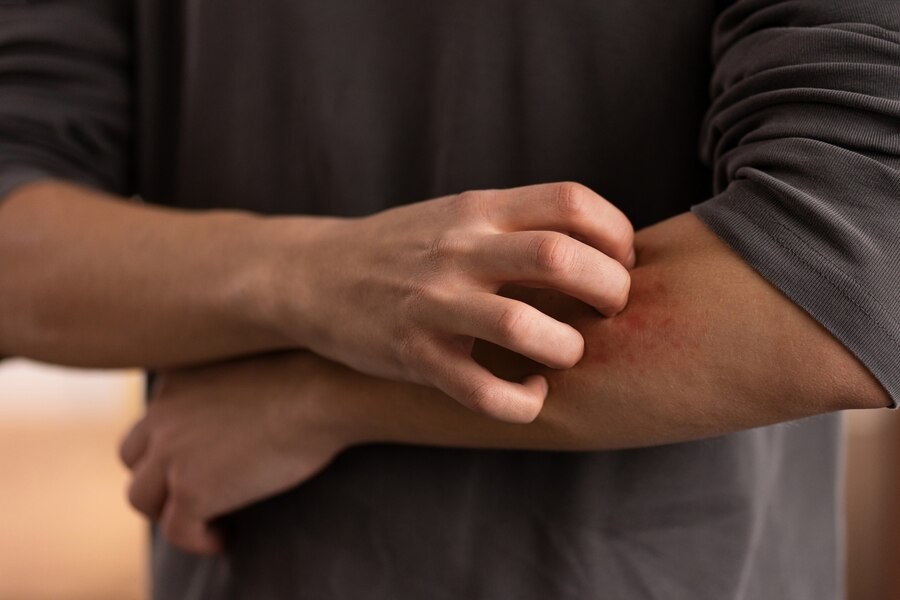Staphylococcal Scalded Skin Syndrome, or 4S, is a severe skin infection that is caused by toxins produced by the Staphylococcus aureus bacteria. The condition typically affects children under the age of six, but it can also affect adults, particularly those with compromised immune systems.
The transmission of 4S disease infection happens through direct contact with the infected person's skin, touching contaminated objects, or the transmission of the infection through dirty hands and nails.
What causes Staphylococcal Scalded Skin Syndrome?
The bacteria Staphylococcus aureus produces toxins that are the cause of 4S disease. This bacteria is known as a pathogen that can cause various diseases.
Staphylococcus aureus bacteria are widespread on human skin and do not cause problems. Nevertheless, this bacteria can potentially cause severe infections in various body locations if it enters the body through a wound.
The toxins produced by these bacteria can bind to proteins in the outer layer of the skin. This toxin can enter the bloodstream. Healthy adults generally have antibodies to this toxin in their blood. Nevertheless, babies and young children typically lack this protection because their immune systems have not yet fully matured to fight these toxins.
Read more: Melioidosis, Hazardous Bacteria Infection
Symptoms of Staphylococcal Scalded Skin Syndrome
Each child with 4S disease may have slightly different symptoms. In most cases, the following symptoms may manifest:
- The child is easily irritated
- Fatigue
- Fever
- Skin redness
- Water-filled blisters that break easily cause tender, painful patches on the skin
- Extensive skin-surface peeling
- Wounds around the umbilical cord or diaper area of a newborn
- Wounds on their arms, legs, and back
Read more: Recognize Types Of Ruam That Often Appear In Babies
How to treat Staphylococcal Scalded Skin Syndrome?
Staphylococcal Scalded Skin Syndrome can be effectively treated and completely cured with appropriate medical care. Young children and babies who are infected with 4S typically require hospitalization and medical treatment, which may include:
- Receive intravenous fluid therapy to prevent dehydration and maintain proper electrolyte balance
- Receive anti-pain medication to relieve your child's irritability and prevent them from experiencing pain
- Receive antibiotic treatment via an intravenous line to treat bacterial infections
- Receive topical treatment with creams and ointments, and also cover wounds with bandages to heal damaged skin and maintain moisture levels to prevent excessive dryness
- Feeding through a tube from the mouth to the stomach as necessary
Young children and babies typically see an improvement in their condition following hospital treatment. Nevertheless, their skin requires a longer period to recover, therefore requiring general skin hygiene maintenance.
After being discharged from the hospital, children still require further attention as their wounds have not fully healed. These wounds are at risk for complications such as shock, dehydration, bacteremia, sepsis, hypothermia, infections that can spread to other areas of the body, and secondary infections.
It is important to immediately get a medical evaluation and treatment from a doctor if you feel your child experiences 4S. Early diagnosis and suitable therapy are crucial for recovery from this disease.
If your baby or child experiences unusual symptoms, you can either visit a doctor or make use of the consultation features that are available in the Ai Care application by downloading the Ai Care application from the App Store or Play Store.
Looking for more information about pregnancy, breastfeeding, and the health of women and children? Click here!
- dr. Alvidiani Agustina Damanik
Adam Ross and Hugh W. Shoff (2023). Staphylococcal Scalded Skin Syndrome. Available from: https://www.ncbi.nlm.nih.gov/books/NBK448135
John Hopkins Medicine. Staphylococcal Scalded Skin Syndrome. Available from: https://www.hopkinsmedicine.org/health/conditions-and-diseases/staphylococcal-scalded-skin-syndrome
WebMD (2023). What Is Scalded Skin Syndrome?. Available from: https://www.webmd.com/skin-problems-and-treatments/what-is-scalded-skin-syndrome
Tracey A. Taylor and Chandrashekhar G. unakal (2023). Staphylococcus aureus Infection. Available from: https://www.ncbi.nlm.nih.gov/books/NBK441868/











